Signs of sediment in your water heater include popping or rumbling sounds, fluctuating water temperatures, cloudy hot water, reduced hot water flow, and increase in electricity or gas bills. A water test kit can also be used to determine if your water heater contains sediment.
Water naturally contains dissolved minerals like iron, calcium, and magnesium. These substances along with particles, like dirt and debris, can settle and form sediment in your water heater or boiler.
Sediment should be removed from your water heater (by flushing) every 6 months, or at least once a year to ensure it doesn’t damage the heater. But there are different types of sediment that can affect you water heater differently.
Why is sediment found in water heaters?
Sediment is simply particles suspended (floating) in water. Substances like dirt, hard water minerals, sand, rust, etc. can all form sediment.
These particles are carried from water bodies, including rivers, streams, and reservoirs, into public and well-water systems. As a result, they are commonly found in your water supply and easily enter your water heater.
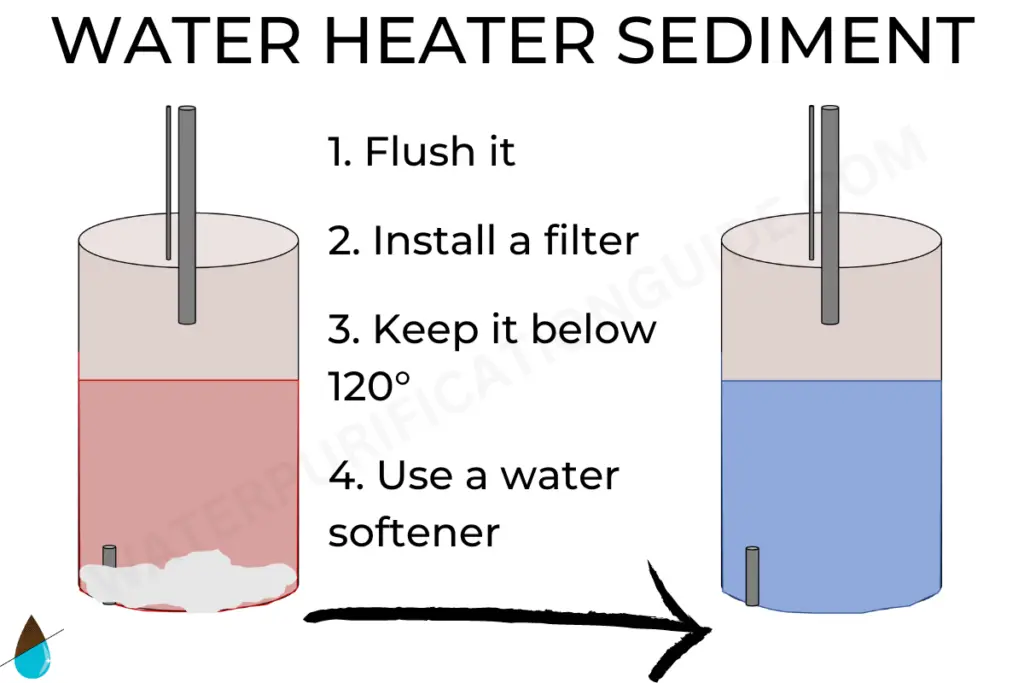
Breaks and leaks along a public pipe network can also allow sediment to enter your home’s water supply. This sediment-containing water will then enter your water heater (along with any other appliance that contains water.
Sediment can also enter a water heater from any old or corroded pipes in your home. Rust flakes can peel off the interior of the pipes and enter the water.
For domestic-well owners:
When building a new well, drilling and digging releases a lot of particles into the water.
Once the well becomes functional, the particles which had previously settled on the bedrock floor get stirred up and pumped into your home.
If you have a damaged well system or cracks in the well casing, sediment-forming particles can easily get into the water supply.
A faulty well screen also allows residues to enter the well system during heavy rain.
Mineral Sediment
The main cause of sediment formation is the deposition of mineral salts on the bottom of water heaters. Calcium carbonate (CaCO3) is a common, naturally occurring mineral and is the most common sediment found in water heaters.
When water is at cool temperatures, minerals, and other sediment-forming particles are suspended.
However, when it gets heated, as in a water heater, these particles come out of suspension (stop floating) and begin to settle.
During this process, they accumulate together and form bigger particles. These particles then pool at the bottom of the heater tank, as they cannot be held in suspension any longer.
Because of how abundant calcium carbonate and other minerals are, sediment formation can occur anywhere in the U.S.
Although, the degree of sediment formation can depend on the area you live. If you live in an area with hard or very hard water, sediment collecting in your water heater is more likely.
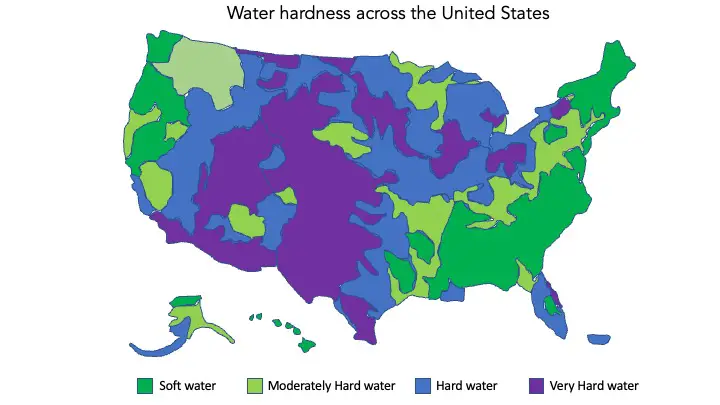
Note: if you live in a home that has treated water, you’ll most likely have fewer issues with sediment than if you live in a home that uses untreated well water.
7 Ways to Know If There Is Sediment in Your Water Heater
Here are the different signs a water heater has sediment that you should look out for:
1. Popping or rumbling sounds
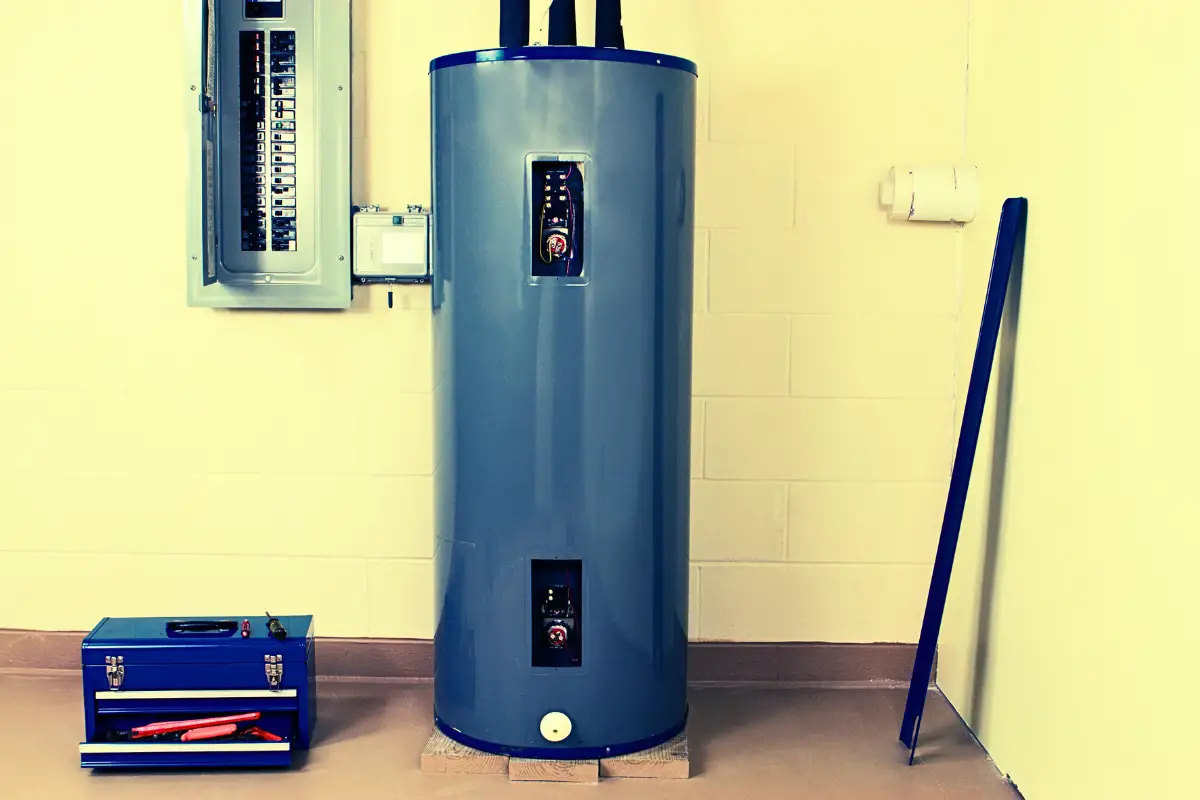
Popping, rumbling, creaking, or banging sounds coming from your water heater are telltale signs of sediment in the tank.
The sounds are produced by sediment burning at the tank base as the heating element heats up, by air trapped in water under the sediment layer, or by steam bubbles going up through the sediment and into the cylinder.
These sounds are literally from air bubbles escaping from the sediment at the bottom of the heater to rise to the top.
2. Reduced or fluctuating water temperatures

If your water is taking longer than normal to get hot, or doesn’t get as hot as it should, this could be a sign of sediment buildup in your heater.
As sediment accumulates in the heater, it eventually creates a layer between the water and the tank’s heating element, preventing enough heat from reaching the water.
As a result, the effectiveness of your water heater becomes unreliable.
3. Cloudy or rusty hot water

The appearance of your water can also let you in on the possibility that your water heater has a sediment issue.
If it has a cloudy appearance, contains little particles, or has a rust-like color and a metallic taste or scent, this is an indication of sediment in the water heater.
As sediment builds up, it corrodes the heater’s lining and wears away. This makes the metal beneath it deteriorate.
The rust particles are then carried from the heater to your water outlets.
4. Reduced hot water flow
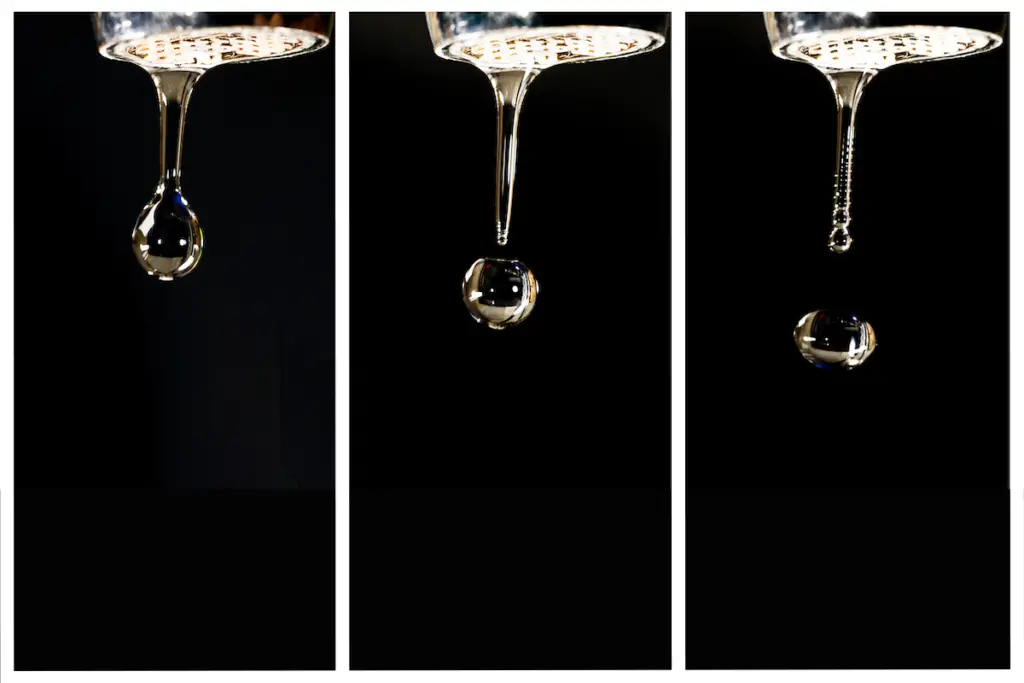
Sediment buildup can easily affect your water pressure, by reducing the flow rate of hot water from the outlets.
An easy way to determine if there is sediment in your water heater, is if you notice low pressure when you turn on the hot water tap compared with the cold ones.
While other things can cause a drop in water pressure, it is only the hot water taps then sediment in your water heater is the most likely cause.
5. Spike or increase in electricity or gas bills

Sediment at the tank’s base makes the heater use more energy to heat the same quantity of water.
This constant use of more energy can create a spike or overall increase in your energy bills.
6. Leak in pressure relief valve
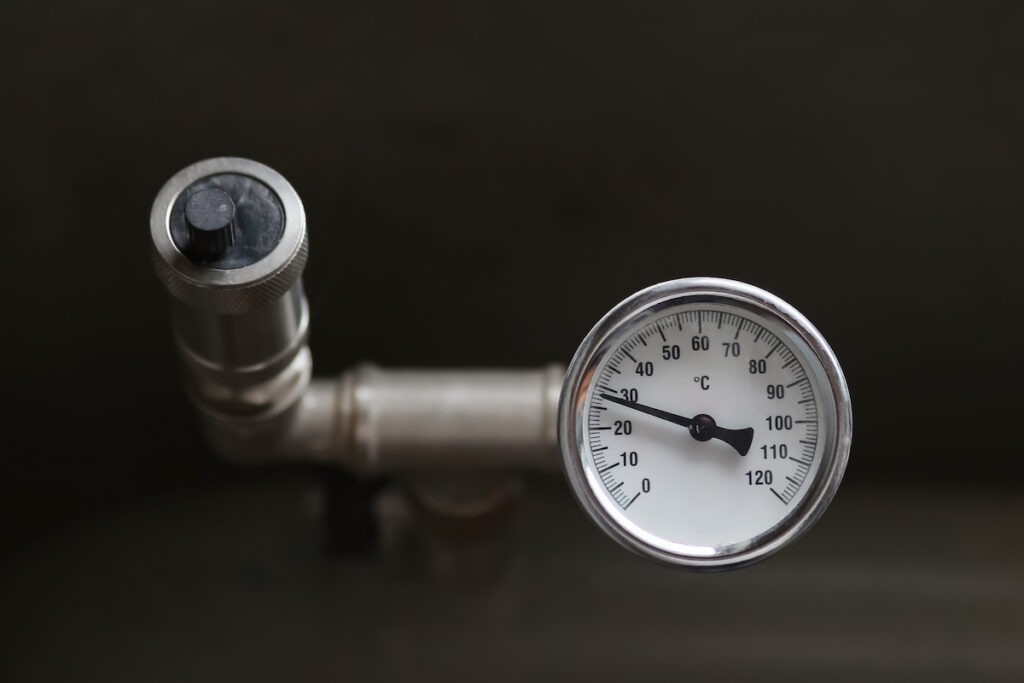
An increase in the tank’s heat causes it to expand and put pressure on the water in it.
As the tank expends more energy to produce more heat than normal, the pressure in the tank also increases.
To manage the pressure and prevent the tank from bursting, the water heater uses its temperature and pressure (T&P) relief valve.
The increase in the pressure within the tank can eventually cause this valve to fail and leak.
7. Water test kit

A good way to confirm that there is sediment in your water heater is by testing your water.
Some parameters, if present, are most likely signs of sediment buildup in your water heater, and include water hardness, turbidity, iron, or manganese.
How To Remove And Prevent Sediment in Your Water Heater
To prevent sediment buildup in your water heater in the first place and remove sediment particles that are already in your tank need different strategies.
To prevent sediment buildup,:
1. Install a whole-house water purification system and include a sediment pre-filter to prevent particles from entering the heater.
Whole house systems filter and remove water contaminants from the onset as it enters your house, ensuring fresh and clean water enters your water heater (and is available at every tap in your home).
2. If you don’t want to install a whole house system (they can be expensive), there are sediment and/or scale filters that can be directly attached to some water heaters. These are usually called “hot water filters“, and a few are available from Amazon.com.
3. Another way to prevent sediment buildup in your heater is to avoid setting your water heater’s thermostat too high.
The hotter the water gets, the easier it is for calcium and magnesium to precipitate out of the water and settle as solid deposits. 120 degrees Fahrenheit is an ideal temperature.
4. One more long-term method that is worth mentioning is to have a water-softening system installed.
This removes calcium and magnesium ions responsible for the hardness of water by replacing them with sodium ions. But a water softener will have no effect on other types of sediment, like dirt or debris.
To remove sediment from your water heater:
There is one way to remove sediment that has already accumulated in your water heater – Flush it
You can hire a trusted plumber to flush the heater and remove the sediment layer, or you can do it yourself. Here are some steps to help:
1. Regular flushing
First, switch off the electricity or gas connection to the heater.
Shut off any water supply to the tank through the cold-water valve and keep a hot water tap running.
Attach a hose to the draining valve and then drain the water from your water heater into somewhere safe, like a bucket, and the sediment will flush from the heater along with the water.
Open the cold water valve and flush until you don’t have sediment in your running water. Then connect it back to its power supply.
Check your heater’s owner’s manual for a detailed how-to instruction guide on getting rid of sediment.
2. Vinegar soak
Shut off the water supply to the tank and drain all the water out. After draining, close the drain valve and pour a gallon of vinegar into the tank.
Let the vinegar sit for six hours or more. Afterward, flush out the vinegar and then return the heater’s power supply.
How often should you flush a water heater?
Most manufacturers suggest flushing at least twice a year or once every six months. It could also be up to three times annually if you water has high TSS (total suspended solids) and TDS (total dissolved solids).
Flushing helps remove the sediment buildup, restore the heater to its normal working state and extend its lifespan.
How much does it cost to flush your water heater?
If you’re not doing it yourself, flushing your water heater will cost you around $100-$350, depending on your location and other factors (like the water heater size and location in the home).
5 Ways Sediment Is Bad For A Water Heater
The sediment formed in water heaters generally doesn’t make your water unusable. Especially not the sediment formed from deposited mineral salts.
In general, sediment is not dangerous to your health, but it can cause a lot of damage to your water heater.
Sometimes, the damage caused by these particles is irreversible and can even cause the release of dangerous chemicals into your water.
Some of the problems caused by sediment in a water heater include:
Reduced effectiveness
As sediment (especially calcium carbonate) builds up in your heater, it reduces the amount of heat that is transferred to your water.
The temperature of the water that flows out will fluctuate and won’t get as high as it normally would.
Hot spots
The sediment layer can cause hot spots at the base of the tank that block and capture the heat. This can cause damage to the tank and lower the heater’s lifespan.
Reduced energy efficiency
Because of the reduced heating effectiveness, the tank’s heating element will try to compensate and increase its energy output to heat the water.
This increased energy consumption will lead to increased energy bills as well.
Reduced storage volume
The sediment over time can become deep and reduce the total volume of the cylinder and the amount of water it can contain.
Sediment can also clog up and break valves, affect your home’s pipes and release harmful metals from the pipes into your water.
Corrosion
Sediment can also wear down the heater’s interior lining, exposing and corroding the steel components.
The water heater can become so severely damaged that it begins to leak. This can cause water to flood your home.
